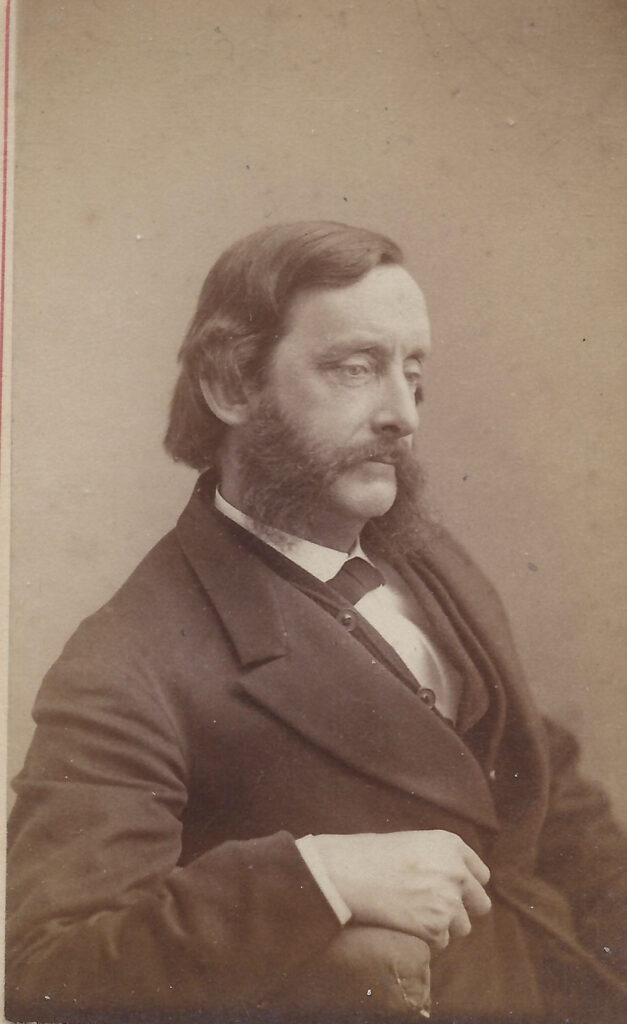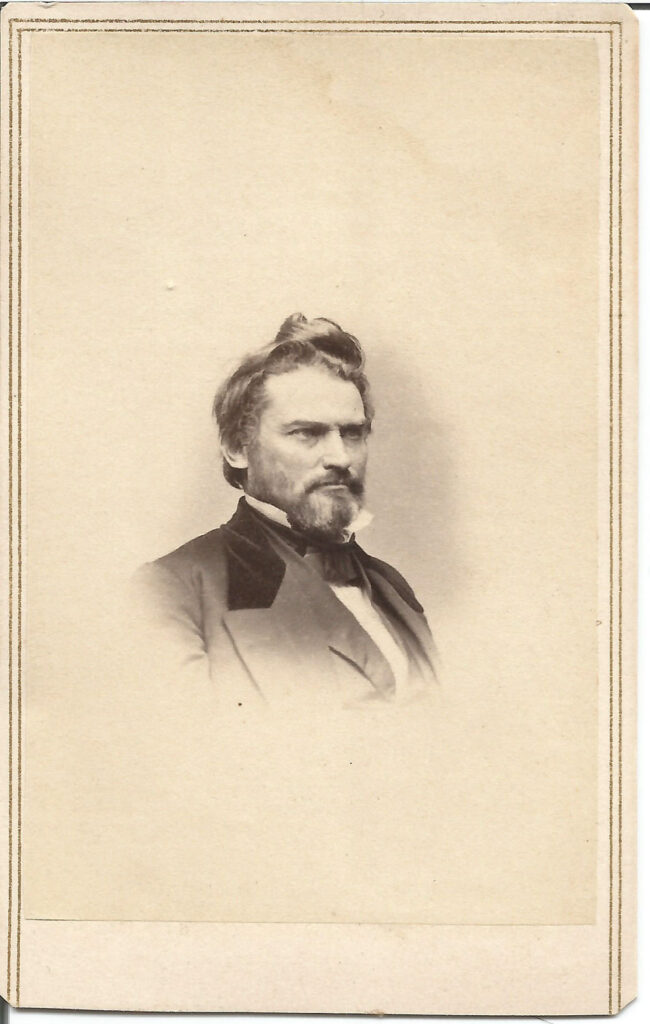Section #15 - Northerners rebel after the 1854 Kansas- Nebraska Bill reneges on the Compromise of 1820
Chapter 182: Northerners Again Resist The Fugitive Slave Act
June 6, 1854
The Capture Of Runaway Slave Anthony Burns Prompts More Anti-Slavery Violence In Boston
As the battles over the Nebraska Bills are being fought out in Congress, violent resistance to the Fugitive Slave Act again flares up in the city of Boston.
It is touched off by the arrest of a nineteen year old slave, Anthony Burns, who escapes on March 24 from his owner, Colonel Charles F. Suttle, of Alexandria, Virginia. Burns is the youngest of thirteen children, several of whom have been sold off previously to cover debts. He is semi-literate, and employed at the time of his capture by one Coffin Pitt, who runs a clothing shop.

Once word of the arrest circulates, the Boston Vigilance Committee rallies to Burn’s defense. He is immediately represented in court by Richard Dana, Jr. and the black lawyer, Robert Morris, both of whom defended Shadrach Minkins in 1851, before an angry mob engineered his escape.
After U.S. Commissioner and Judge Edward Loring grants a delay in Burn’s trial, two abolitionist groups agree to meet on Friday, May 26, to discuss strategies to gain his release. A crowd estimated at 2,000 people are together at Faneuil Hall when word reaches them that the other contingent has left Tremont Temple and is already marching on the city jail. It is led by the black merchant, Lewis Hayden, who helped William and Ellen Craft flee in 1850, and joined by a thirty year-old white Unitarian minister, Thomas Higginson, ready to embrace violence in the name of freeing the slaves.
But this time the authorities, under Mayor Jerome V. C. Smith, are ready to withstand the mob, and they do so after a pitched battle. Deputy U.S. Marshal James Batchelder is stabbed to death in the action, while several others are wounded. The police arrest thirteen attackers, among them Wendell Phillips, son of the first Mayor of Boston and a member of Lloyd Garrison’s inner circle.
With tensions rising, Judge Loring opens the trial of Anthony Burns on Saturday, May 27. It ends six days later when the worn-down runaway acknowledges that he has in fact escaped from Colonel Suttle. Familiar pleas from Dana and Morris that the Fugitive Slave Law is unconstitutional follow the admission, but to no avail. Judge Loring orders that Burns be handed over to Suttle.
To insure that the order is carried out, Mayor Smith enlists two companies of the Massachusetts Militia and calls upon the President to add U.S. troops. Pierce complies immediately, sending a total of twenty-two companies of cavalry, infantry and artillerymen to show the world that the Fugitive Slave Act is being upheld.
The presence of these troops – some 1,000 strong – further incites the Boston public, and many thousands turn out on Saturday, June 3, 1854, to protest as Burns is paraded from the jail to the Long Wharf. Storefronts along the way are draped in black crepe; the U.S. flag is flown upside down; a coffin with the word “Liberty” appears and shouts of “Kidnapers” ring out. Still, the overwhelming display of military force is sufficient to avoid physical attacks, and Burns is soon put aboard a ship taking him back to Alexandria.
The story does not, however, end there. Newspaper coverage spreads Burn’s fate across the nation, and anti-slavery rallies follow on. The most dramatic belongs to Lloyd Garrison who, at a Fourth of Celebration in the town of Framingham, burns copies of Loring’s decision, the 1850 Fugitive Slave Law, and, finally, the U.S. Constitution itself – calling the latter “a covenant with death and an agreement with hell.”
The publicity is sufficient to raise some $1200 from anti-slavery supporters to secure Burn’s release, but Suttle refuses the offer. After several months, he sells Burns to a planter named David McDaniel for $905, and then McDaniel turns a fast profit by accepting the offer made by Boston’s black Baptist minister, Leonard Grimes.
A free man, Anthony Burns uses proceeds from a book on his exploits to attend Oberlin College for two years before heading to Upper Canada as a preacher in a Zion Baptist Church. While there he contracts tuberculosis and dies at only twenty-eight years of age.
His death marks the end of the famous runaway slave incidents that have marked Boston as the center of America’s abolitionist movement.
July 19, 1854
The Wisconsin Supreme Court Rules Against The Fugitive Slave Act In The Sherman Booth Case
Far to the west of Boston, in the state of Wisconsin, another challenge to the Fugitive Slave Act is playing out.
Once again, the impetus is the intrusive arrest of a runaway, one Joshua Glover of St. Louis, Missouri, who is seized at his dwelling in Racine, Wisconsin on March 10, 1854. The captors include his owner, Bennami Garland, a U.S. Marshall and several associates. Glover is tossed into a wagon and transported to a jail cell in Milwaukee.
Word of Glover’s plight reaches the abolitionist, Sherman Booth, who vows to resist the capture.
The forty-two year old Booth is a native of western New York State, where he is exposed as a youth to the religious revival movements of the 1830’s. He is soon an abolitionist, offering his support to the Africans jailed in the 1839 Amistad affair, and helping to organize the Liberty Party, even before graduating from Yale University in 1841.
Booth is a newspaperman by trade and a political strategist, in the tradition of Thurlow Weed. His first abolitionist publication, the Christian Freeman morphs into the Wisconsin Freeman, after he moves to the state in 1848, soon after its admittance to the Union. What follows is an intense search for a political party that corresponds with his beliefs. He momentarily renames his paper the Wisconsin Free Democrat, then joins the Free Soil movement before settling on his own platform, which eventually influences the founding the Wisconsin Republican Party.
But in March 1854, his focus is on freeing Joshua Glover. To do so, he calls upon opponents of slavery to gather at 2PM on March 11 and march together to the courthouse in Milwaukee. Several thousand turn out, and they proceed to ignore Booth’s admonition to protest peacefully and not break any laws. The result is mob action reminiscent of the Boston riots, with Glover quickly seized and spirited away to freedom, first in Waukesha and then on to Canada. He lives there until age eighty-one, working as a carpenter, marrying twice and owning his own land and cabin.
Booth himself does not participate in the jailbreak, but does praise it in his newspaper editorials, saying that the action puts an end to enforcing the Fugitive Slave Act in Wisconsin.
Along with his actions on March 11, his brazen reportage makes him the target of federal efforts to uphold the law. When he is arrested on charges of obstruction of justice, it marks the beginning of some nineteen separate trials that will find him in and out of court and jail over a six year period.
One early turning point in his legal battles comes on July 19, 1854.
After a release on bail, Booth voluntarily returns to prison to secure a writ of habeas corpus, a legal maneuver that brings him before a judge and forces his captor to “make their case” against him. The hearing occurs before the Wisconsin Supreme Court – which rules in Booth’s favor. The decision, written by Associate Justice Abram D. Smith, takes on national importance by declaring the Fugitive Slave Law unconstitutional and labeling it “a wicked and cruel enactment.”
This pronouncement, of course, cannot be left to stand with President Pierce and the South – and, two days later, Booth is re-arrested by federal marshals and returned to jail.
In January 1855 he is tried and convicted in a U.S. District Court. On February 3, the Wisconsin Supreme Court again sets him free. In turn, the U.S. Supreme Court agrees to hear the case in May, but action is stalled by lack of cooperation from the Wisconsin judiciary. In July 1855, Booth loses a lawsuit brought by the slave-owner Garland, and is forced to pay a $1,000 fine.
This back and forth theater continues until March 1860, when the U.S. Supreme Court under Justice Taney finally rules in Abelman v Booth. The decision is unanimous and no surprise to constitutional lawyers. It simply reaffirms the principle that federal law trumps state law – and that the Wisconsin Supreme Court had no authority to invoke habeas corpus in a U.S. court action.
A bankrupt Booth is now forced to sell his newspaper and is returned to prison in Milwaukee.

But Booth’s supporters across Wisconsin remain intent on opposing both his sentence and the legitimacy of the Fugitive Slave Act. In Congress, their junior Senator, James Doolittle, tells his colleagues that “an unconstitutional law is no law” and that it was the duty of local judges “to protect the rights and liberties of citizens of the state.”
On July 4, 1860, a crowd gathers outside Booth’s second story cell in the Customs House to hear the prisoner deliver an address where he casts himself as a martyr to a just cause and urges the crowd to support Lincoln and the Republicans in the November election.
Three weeks later, on August 1, an armed rescue party enters the facility and frees Booth. According to newspaper reports, he walks to his brother-in-law’s house where he is applauded by a crowd before being escorted to a train taking him to Waupun.
His freedom lasts for two months before he is arrested on October 8. This time remains in jail under heavy guard for seventeen months, until President James Buchanan finally decides to release him two days before he leaves office. Booth lives another forty-three years, working as a journalist and supporting his political and reform causes to the end.